Choosing a Machete
The machete is a multi-purpose tool useful for cutting agricultural products while also doubling as a weapon. Its general wide-tipped shape with a weighted upper blade allows it to come down with like a cleaver with enough chopping force to split open coconuts, cut sugar-cane and clear heavy vegetation. Imagine what it can do to an opponent.
Its heft and curved shape are helpful in chopping meat, digging roots and clearing brush. In fact, as a survival tool, even the cheapest models can help you carve, chop, cut, dig, hack, hammer, slash, split, scrape, and whittle woody vegetation.
In our modern age, consumers have a lot of choices. This makes it difficult to know what machete is best for a job. A quick search online for machetes will turn up a lot of different types and styles. They’ll cost you anywhere from just over $10.00 dollars to just a bit under two hundred dollars.
Which one is best for you?
We’ll explain what to look for and list the most sensible choices. The first thing to do is to know your purpose for using it.
Purpose
Most people putting together a Bug Out Bag are likely searching for a machete model that can be used for survival and agricultural purposes. A check online will turn up recommendations for chopping saplings, clearing land or hammering nails. Many people who live in rural areas across the continent generally will own more than one model. For our purposes, the assumption is that we can never come home and we’re carrying everything we own on our back. So, we’ve got to narrow it down to one. We’ll list a half a dozen choices and hope this helps you find the one you want.
The Khukuri in the picture below retails for $150.00 because of its good quality. It’s purchased largely for it’s ‘looks’ rather than its’ ability to cut, nevertheless, it has features you should look for in an excellent machete. Sturdy models can be had for about half this amount.
What to Look for?
Affordable
You don’t have to spend tons of money on something that is made by hand, but this doesn’t mean you should settle on buying junk. Times have changed and manufacturing shortcuts have reduced the quality of machetes; but there are many good mass produced machetes. Just don’t settle for the lowest price or the coolest looking. The top 25 best selling machetes retail between $20.00 and $40.00 dollars and include a sheath. If you pay $6.00 dollars for a machete, you’re going to get $6.00 dollar quality unless you got quality on a serious discount. This means the blade is more flimsy, can only be used to cut small limbs and clear brush, and is susceptible to breaking. If you can spare the money, look at the premium models that retail at $70.00 dollars and higher. You’ll get hardness for cutting small logs, those with rubber or leather handles give a soft yet snugger fit for better handling, will not get slippery from moisture and may have a knuckle guard for protection. For your money, you will get long-lasting durability.
Easy Maintenance
Generally speaking, high carbon steel is harder than stainless steel and will hold its sharpness for a longer period of time. Stainless steel tends to dull more easily. The downside of having this hardened carbon steel is it will be more difficult to re-sharpen when it loses its edge and will stain when exposed to air and moisture. Stainless steel, on the other hand requires less maintenance but don’t be mislead, ‘stainless’ steel doesn’t mean rust proof, just rust resistant. It will hold up best in any wet condition. Both types of machetes should be wiped down after every use. A little oil doesn’t hurt either.Stainless steel happens to be good for show pieces hanging on your wall. Carbon models are better for work use and survival functions.
Good Handle
Find a handle that fits your hand because good gripping ability allows you to cut better. What one person loves the other person may hate. If you’re going to do a lot of chopping, find a rubber handle because the rubber absorbs the energy from the blows. It feels good to the hand but can degrade more easily than plastic or wood.
Plastic is easy to maintain. Wipe it down easily but it tends to get slippery from sweat and rain when you use it. You can even make adjustments by wrapping parachute cord, leather or duct tape to give you a better grip or just to repair your machete handle. The less expensive models use hard plastic for a handle and these tend to crack. Some handles are of a shatterproof polymer, have the option of a hand guard and may have a para-cord lanyard.
The best models have a rubber, composite or hardwood handle which allows snug fit. Wood handles very well under stress, especially the hard woods. Look for durable wood handles or composite that won’t crack or warp; rosewood and oak are sturdy.They give you a good grip and are generally lightweight. Some come with a comfortable steel knuckle-guard and a strong pommel that allows aggressive hammering on nail heads. If you can find models with riveted handles, select those. Any knuckle guard will protect your hands and knuckles better than not having one. It also helps with smaller hands that tend to slip off.
If you select steel or another metal, try to wrap it in para-cord or leather in order to diffuse the tendency to be slippery under use.
Multiple Uses
This is really what you’re looking for, a blade that can fend off angry animals, butcher meat, cut roots and trails, split nuts all while still retaining a sharp edge and sturdiness. The Kukri is very popular.
Shape
The shape of the blade tells you what it’s good for. A widened point shifts the weight forward and allows for excellent slashing and chopping. A shorter, fatter blade is similar to the strength of a hatchet and is great for woody vegetation. Find one that fits your hand. Don’t choose a machete shape for the ‘cool’ looking factor or cheap price. Your machete of choice should blend offensive-defensive use and utility together. The power of cuts will come from the slope of the blade.
Size
Stay within a certain machete length for your build and hand size. The Kukri is a great start at 13” inches for any person. Go longer if you want it for a weapon. Some machetes go up to 36″ in length. Keep in mind the longer you go above 18” inches will mean it’s less portable, not as easy to pack away and you’ll tire more easily when hacking away with a heavier blade.
Tang
If you’re going to be chopping look for a full tang. This is the portion of the blade that extends into the grip. The blade should be one solid piece. The tang will insure the blade can be swung with greater force and won’t weaken at the handle like a more cheaply made version. Affordable models are fine for cutting vines and thin branches but it you’re doing more than just yard work, look at spending more than $20.00 dollars.
Toughness
A heavy-duty design and size allows you to chop a machete like a cleaver. The chopping power for very good models allows you to chip at concrete, break rocks and nearly cut some nails in half. When it comes to machetes, a lightweight or thinner blade can sometimes mean faster dulling and the potential to break more quickly because the thin blade can’t take the twisting forces of impacts. Carbon steel machetes are thicker and sturdier and will retain their edge longer. Stainless steel is generally thinner but can shatter more easily. Thin doesn’t always mean cheap, but in regards to machetes, a thin blade won’t have a lot of weight behind it when striking. The flimsy models that currently retail are great for clearing garden weeds but not for chopping wood logs.
Bolo Machete
A wedge shape or bulge at the tip give it weight for added chopping power. This weapon originated in South America and found its way into the Philippines and Cuba. The swell of the nose allows it to be put to good use on trails for thinning brush and light chopping for cutting saplings and removing small branches. A longer version is excellent for use as a weapon.
Bush Machete
A rugged, inexpensive solution for clearing bush. Walmart retails this model but you can find a tougher, better made item elsewhere. The curvature of other blades, like the Kukri, allow multi-functioning. This is a straight, no-nonsense blade made excellent for everyday cutting of dense plants and thick vines. Look for thinner (not thick) blades as it reduces fatigue when swinging it all day.
Golok Machete
The Golok is a South East Asian blade and different from other machetes. Whereas machetes tend to be nearly straight, the Golok has a shorter, heavier, thicker blade. The primary grind, where the blade begins to narrow into the cutting edge, prevents it from lodging or jamming into green wood.
Kukri Machete
The Nepalese Kukri is the most popular of all the machetes. They tend to cost more but it’s a valuable multi-tool. Specifically made with a curvature, the pointed tip allows for stabbing, yet the wide nose allows for chopping. As the midsection narrows, this thinner portion near the handle is excellent for whittling and carving. A good, heavy blade for attacking and cutting without effort.
Panga Machete
This is very popular in Africa due to its sturdiness and the wide, upturned tip allows for piercing and stabbing while the weighted belly helps to cut through thick brush. The overall shape of the blade permits it to be counter-balanced by the handle.
Parang Machete
The place of origin for this blade is Malaysia. This tool is similar in fashion to a Bolo Machete, in that it is balanced at the tip and handle. The blade tends to be long, narrow and heavy the balance allows an overall good swing and slash. Good for chopping wood and as a weapon because of its ability to slice and it’s similarity to a sword.
Bolo Machete pic www.thebushcraftstore.uk
Bush Machete pic from Walmart.com
Golok Machete pic www.outdoor-treasure.de
Kukri Machete pic from www.knife-depot.com
Panga Machete pic from the www.knifecave.com
Parang Machete pic from the www.thebushcraftstore.co.uk

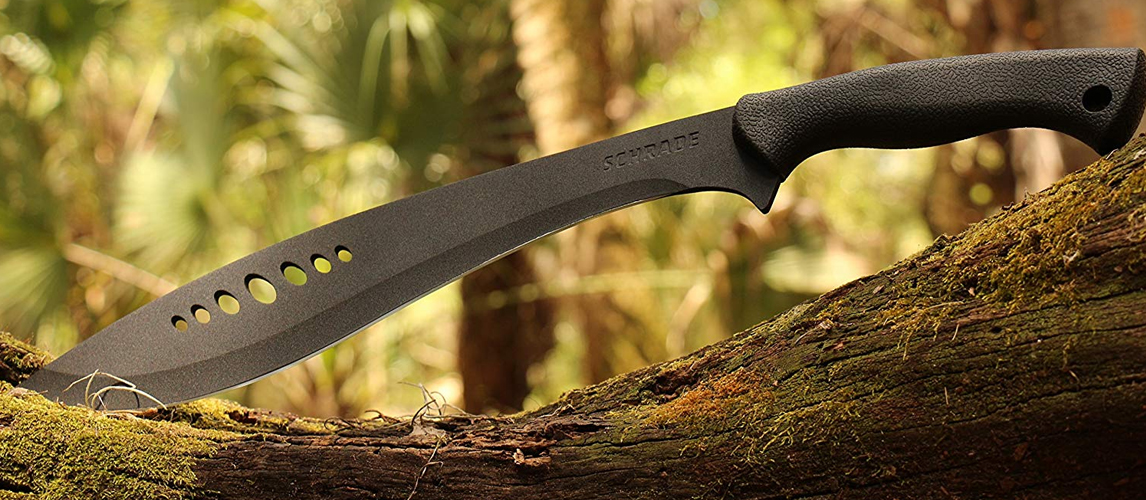
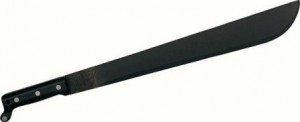
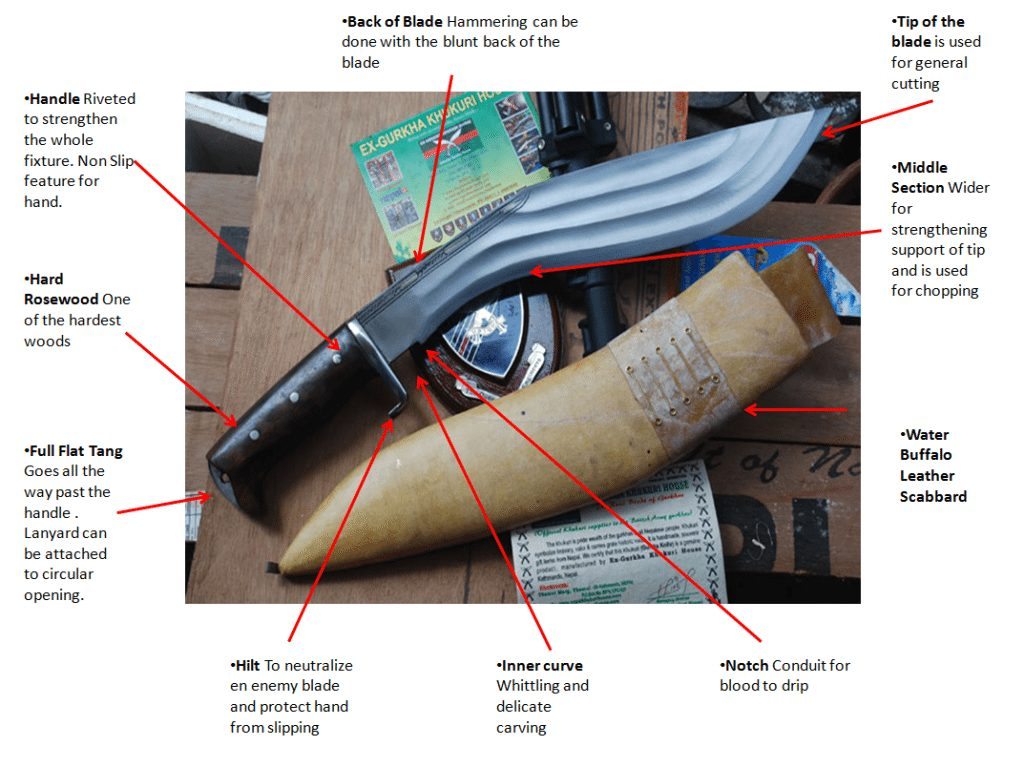
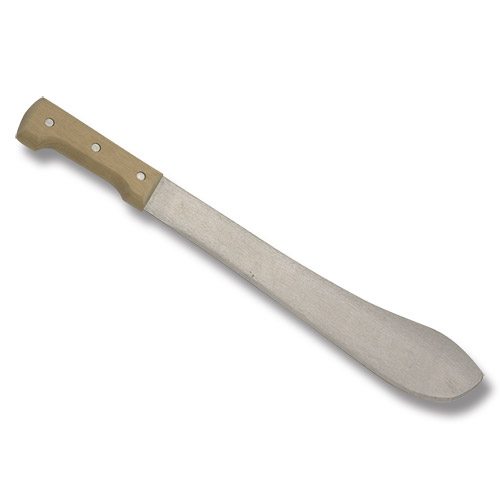
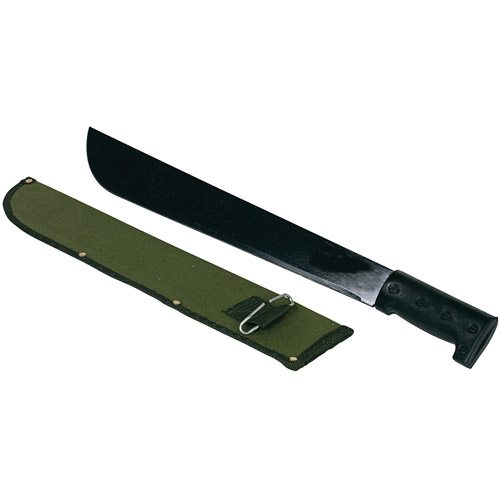
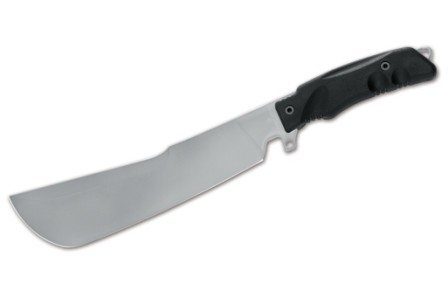
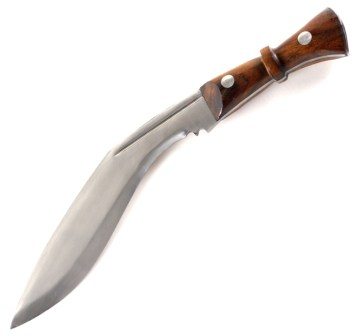
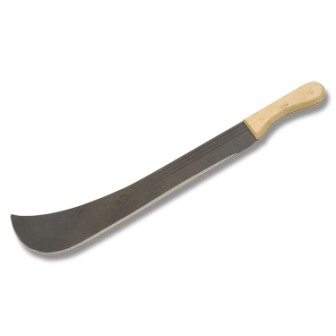
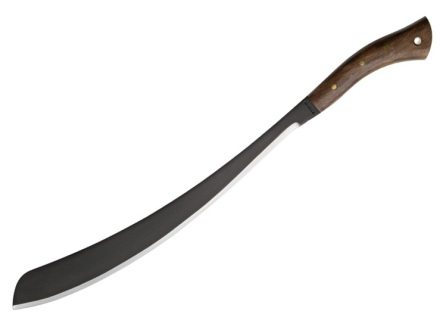
http://www.nepalesekhukuri.com/
The Khukuri comes from the Nepalese Khurkuri House. Just saw your comment now. My apologies.
The fixed blade knife is one of those things that many people take for granted. In fact, despite using them occasionally many never give much thought about it. The knife helps you shape items such as wooden poles for instance when making stakes
This is a great inspiring article. I am pretty much pleased with your good work. You put really very helpful information.
When looking for a machete it’s important to keep in mind your intended use. Most machetes are built for clearing brush and small timber. They work great as a multi-use camping blade. With that said, the overall pick is the Gerber Gator. You can’t beat the combination of blade length, paracord, grip, and brand. With that said, any of these options are suitable and would be worthy of your purchase.
Thank you for amazing information.